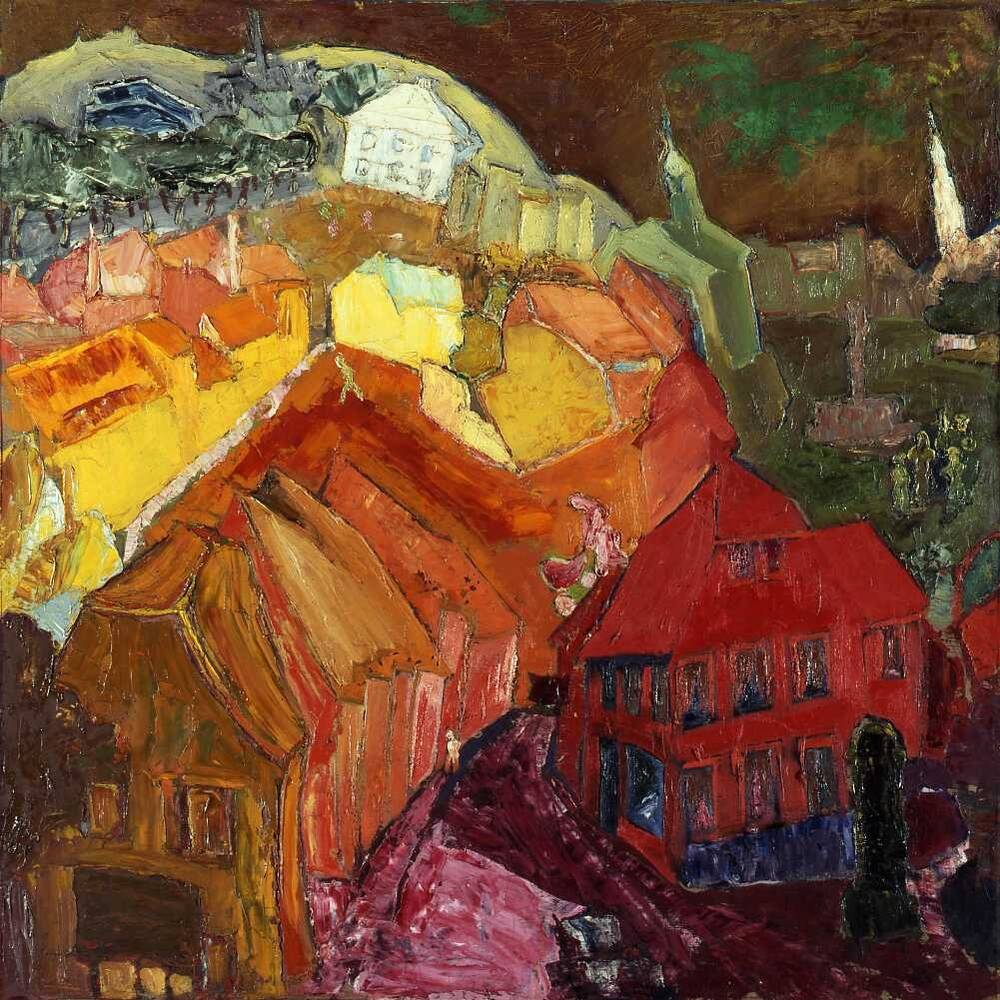This painting by Carl Lohse depicts the small town of Bischofswerda – for the artist, a paradise on earth. Lohse was born in Hamburg – and curator Birgit Dalbajewa explains how came to live in a little town in Saxony.
“Carl Lohse belonged to that generation of male artists who had to go off to war as young men. In the Battle of the Somme, his company was buried when the trenches collapsed. Lohse was the only one to survive. Later, he was held as a prisoner of war. When finally released, he was initially destitute, and could never have lived as an artist – but then he met a young woman who was a painter. She came from Bischofswerda, a small town in Saxony, and invited him to stay there. The young woman’s sister was well-situated through her marriage to a factory owner, and Lohse became their house guest. He spent a good two years there, free from cares, painting like one possessed.
In the centre of his painting of Bischofswerda, Lohse set Dresdner Straße, the street with the house of the family where he was staying.
“We see the town rather like an unfolded fan in a spectrum of different colour temperatures. Towards the centre near the family’s house where he was staying, the colours become steadily more incandescent, and then he fans out this little town from the fiery red through a luminous orange to a bright yellow.”
Lohse’s first exhibition was held in 1921 in Dresden. The critics were thrilled by his idiosyncratic expressionist paintings, but his works did not sell. Carl Lohse was so disappointed he gave up painting. Only years later did he take up his artist’s palette and brushes again.
Further Media
Lohse in the First World War
For the generation of artists born in the late nineteenth century, the First World War was a radical break, a watershed in their lives and art – just as it was for Carl Lohse. Born in Hamburg in 1895, he showed considerable promise in his early years. At the age of 15, he was already attending a school of arts and crafts. Two years later in 1912, he was awarded a scholarship to study at the art college in Weimar. But he did not stay there for long. Driven by his quest to find his own artistic voice, he moved to Holland to find a new inspiration in tracing the footsteps of Vincent van Gogh. In 1914, though, with the outbreak of war, he returned to Germany. Lohse applied to join the army as a reserve officer, which might well have spared him front line service.
“The graduates of arts and crafts colleges especially, such as Carl Lohse and Otto Dix, were not deployed at the army bases, but sent straight into the trenches on the front lines, and experienced the war directly at first hand,”
... and, curator Birgit Dalbajewa added, artists who had studied at state art academies tended to be given the rank of officers. In 1916, Lohse, then 20 years old, saw action in the Battle of the Somme, probably the most brutal and deadliest military action on the western front. Lohse’s company were buried when a shell collapsed their trench, and he was the only one to survive. Later he was taken prisoner by the British forces. After three years of heavy work as a prisoner of war in the Calais quarries, he returned to Hamburg. Destitute, he was helped by a young woman painter who had studied art with him. She introduced him to an art-loving factory owner in the small town of Bischofswerda in Saxony. In his new patron’s house, freed from his financial worries, Lohse could return to painting – the start of an intensive creative phase. In audacious, expressionist pictures, he grappled with his traumatic experiences on the front lines. His first paintings show skeletons, bodies split and bursting – a shattered world offering no security, and no fixed point of support.
- Location & Dating
- 1920
- Material & Technique
- Mixed media on canvas
- Dimenions
- 98 x 98 cm (Katalogmaß 2010) 98,5 x 98 cm (Inventurmaß, 27.04.2010) 113 x 112,3 x 4 cm (Rahmenmaß, Tobias Lange, 27.04.2010)
- Museum
- Galerie Neue Meister
- Inventory number
- Gal.-Nr. 3683
